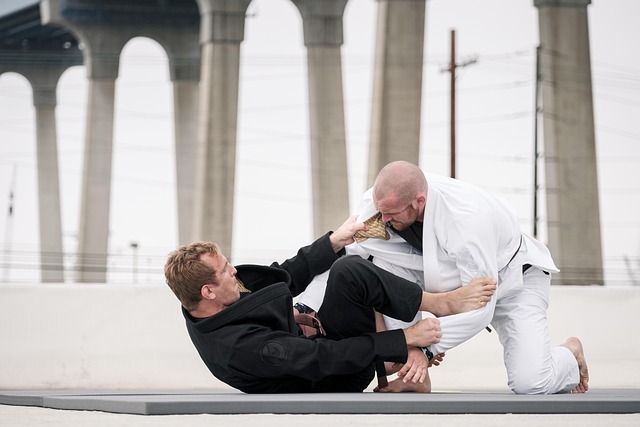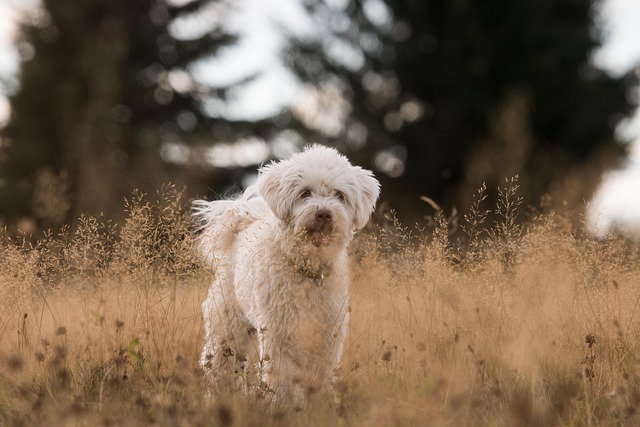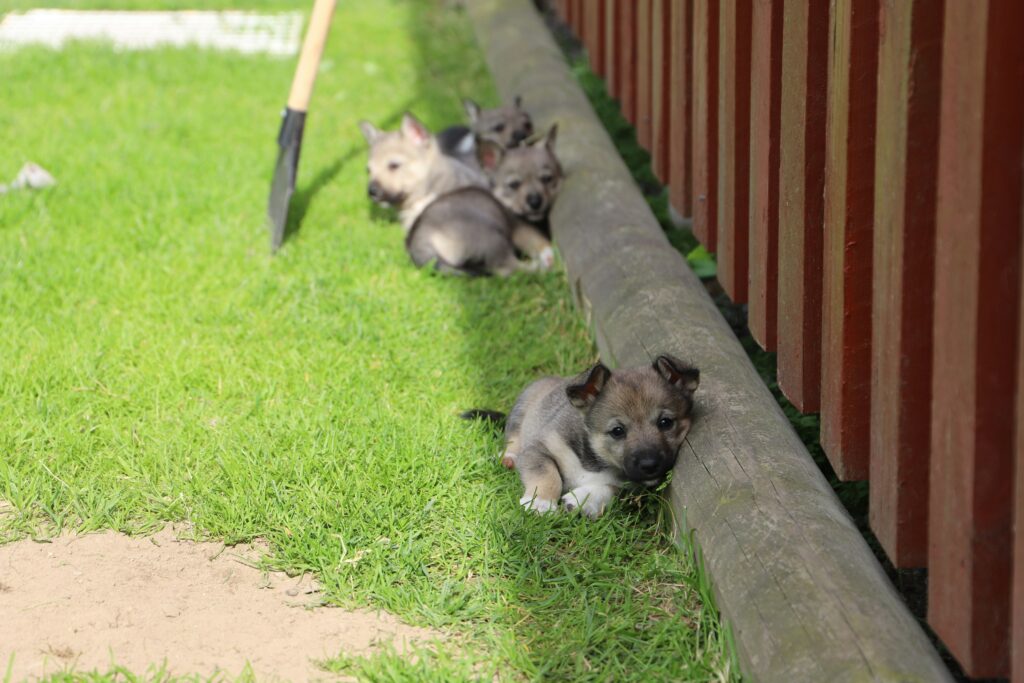Why Advanced Training Matters
Advanced dog training goes far beyond teaching sit, stay, or heel—it’s about deepening the communication and bond between you and your dog. As dogs progress past basic obedience, they become more in tune with their environment, their handlers, and the challenges that testing situations can bring.
Building Trust and Responsiveness
A dog that’s trained at an advanced level learns how to actively listen and respond—even in unpredictable or distracting environments. This level of training cultivates:
- Stronger handler-dog communication
- Increased confidence and decision-making skills in your dog
- Mutual trust that’s essential during high-stress scenarios (like off-leash hikes or crowded areas)
Mental Stimulation That Lasts
Just like humans, dogs thrive on mental engagement. Advanced training introduces layers of complexity that keep the dog’s brain active, helping to prevent unwanted behaviors that stem from boredom or frustration.
Benefits include:
- Reduced destructive behaviors
- Lower stress and reactivity around triggers
- Improved focus and patience during everyday interactions
It’s Not Just for Working Breeds
While herding and working breeds often excel with advanced activities, any dog can benefit when the training is tailored appropriately. Whether it’s a toy breed, a senior rescue, or a high-energy adolescent, advanced skills improve quality of life across the board.
Dogs that particularly benefit from advanced training include:
- High-energy companions needing structured outlets
- Anxious or reactive dogs looking for mental stability
- Formerly under-stimulated pets now seeking new challenges
Advanced training isn’t reserved for professional handlers or show dogs—it’s about giving everyday pets the tools to thrive in a complex world.
Foundation First: Before Moving into Advanced Territory
Before diving into advanced dog training, it’s crucial to ensure that your foundation is strong. These core concepts, often overlooked, are what set successful trainers apart from frustrated ones.
The Power of Consistency and Timing
Professional trainers rely on consistency and precise timing more than flashy techniques. These two “invisible tools” are essential for effective communication between dog and handler.
- Consistency helps your dog form predictable associations with cues and expectations.
- Timing ensures that rewards or corrections are connected to the exact behavior you’re trying to reinforce or redirect.
A mistimed reward can strengthen the wrong behavior. Frequent inconsistency can create confusion or stress, stalling progress in advanced work.
Your Dog’s Reinforcement History Still Counts
What you’ve taught your dog in the past forms a reinforcement history—your dog’s internal learning timeline. This history shapes how effectively new behaviors are learned and generalized.
- Think of reinforcement like a bank account: the more positive deposits you’ve made, the more valuable your cues become.
- Dogs with a rich history of well-timed rewards tend to be more confident and adaptable during new challenges.
Before moving on, assess how solid your dog’s core responses are. Sloppy sits, unreliable stays, or inconsistent recalls often signal the need to go back and rebuild, not move forward.
Is Your Dog Ready for Advanced Training?
Not every dog is ready to jump into advanced-level tasks, even if they’ve mastered the basics. Look for signs that your dog is prepared:
- Responds reliably to cues in varied environments
- Maintains focus around distractions
- Shows enthusiasm and engagement during sessions
- Recovers quickly from corrections or environmental stress
If these boxes are checked, your dog’s foundation is solid enough to support the complexity of advanced work. If not, there’s no shame in revisiting core skills before progressing.
Advanced training succeeds when it’s built on clarity, structure, and gradual challenge—not speed or pressure.
Technique 1: Complex Cue Combinations
Advanced training often involves asking dogs to perform multiple actions in a specific order. This is where complex cue combinations become invaluable.
Teaching Multi-Step Behaviors
Training multi-step behaviors—such as retrieve and place or go to mat and stay until released—helps build stronger communication and mental stamina in dogs.
To train a multi-step behavior:
- Break it down into individual skills (e.g., retrieve object, walk to place, place item down).
- Master each component before attempting to chain them.
- Use clear markers (e.g., a click or verbal cue) between steps during early training.
Pairing Verbal and Visual Cues
Dogs often respond better when given both verbal and visual signals. In advanced training, consistency and clarity become even more important.
Best practices include:
- Introduce cues one at a time, starting with the strongest (usually visual for most dogs).
- Gradually pair verbal cues once the visual cue is reliable.
- Fade out excessive body language over time to ensure your dog isn’t only relying on visuals.
Understanding Chaining Logic
Chaining is a training technique where individual behaviors are linked together to form a sequence.
There are two primary types of chaining:
- Forward chaining: Teach and reinforce each step in order, adding new steps at the end.
- Backward chaining: Start from the final behavior and build the sequence in reverse. This often builds confidence, as the dog is immediately reinforced at the sequence’s conclusion.
When teaching complex cues:
- Choose the right chaining method based on your dog’s learning style.
- Ensure each link in the chain is strong before moving on.
- Keep sessions short and focused to avoid frustration.
Mastering complex cue combinations sets the stage for more precise and engaging interactions with your dog. It taps into a deeper level of communication that strengthens the working relationship and enhances problem-solving skills on both sides.
Technique 2: Precision Recall Under High Distraction
Recall is easy in your living room. Out in the real world? That’s where things get messy. Dogs don’t generalize well, so when the stakes go up—like in a park full of squirrels, joggers, or another off-leash dog—they often tank a cue they “know.” That’s where real-world proofing comes in.
Start with controlled distractions. Crowded trails, open fields where wildlife might cut across, or a neighborhood with leashed dogs behind fences. These environments teach your dog that recall doesn’t mean “come when nothing else is happening.” It means come no matter what.
Long lines (30 to 50 feet) are your safety net and training tool. They give your dog room to move while keeping you in control. Don’t rely on the leash to yank them back—use it like a seatbelt, not a steering wheel. Let the dog make the decision, and then reinforce it. That’s where remote reinforcement steps in.
Remote treat dispensers or a pocket full of jackpot rewards help turn “come” into a goldmine. But here’s the trick: mix it up. Food, toys, play, even being released to go chase again—all of these can be rewards. Monotony kills motivation. Alternating what the dog gets—and occasionally surprising them with something amazing—builds reliability.
The goal isn’t just recall. It’s a dog that chooses it, even when instinct says otherwise.
Technique 3: Advanced Impulse Control
Impulse control isn’t just about stopping your dog from lunging at a treat or barking at a squirrel. At an advanced level, it’s about helping them achieve emotional stability around triggers—whatever those triggers may be. This means developing sustained neutrality, not forced stillness. A well-trained dog should notice the stimulus and choose not to react. That choice is built on repetition, clarity, and timing.
Training this starts with revisiting everyday cues like “leave it” but pushing them further. Instead of a one-second glance away, we’re aiming for prolonged disengagement. To build that, station training is essential. Place your dog on a mat or platform, introduce mild distractions, and steadily increase the challenge: louder noises, closer movement, sudden changes. The goal isn’t perfection; it’s composure under increasing pressure.
High-value stimuli (food, toys, motion) are the next test. Not only should the dog resist going for them—they should also remain relaxed doing so. Introduce delay and increase duration before a release cue. Five seconds becomes ten, then twenty, then a minute. Reinforce with purpose, and reset often. Your dog isn’t just learning to ignore temptations—they’re building mental endurance, one rep at a time.
Technique 4: Scent Work and Tracking Basics
Scent work takes something dogs already do instinctively—sniff—and turns it into a structured mental workout. It’s not just cute or quirky. It builds confidence in insecure dogs, sharpens focus in high-energy ones, and delivers real enrichment without needing a massive backyard or fancy equipment.
For tools, start simple. A few clean containers, cotton swabs with essential oils (birch is a common starter scent), and a handful of treats is enough. Controlled exercises like box searches or paired scent games help dogs learn to connect odor to reward. The key is structure: keep scent placement consistent, isolate distractions, and always mark success clearly. The dog’s brain is doing heavy lifting here—respect the process.
Moving from basic nose games to competition-level tracking isn’t magic—it’s progression. Advanced scent work introduces complexity gradually: varied environments, aged trails, multiple odors, unknown hides. You stretch the dog’s problem-solving skills while reinforcing precision and drive. If you’re consistent, keep records, and build methodically, what starts as “find it” in the living room can evolve into trial-ready fieldwork.
Bottom line: scent work is scalable, satisfying, and taps into your dog’s deepest instincts. And it’s a lot more than just following a nose—it’s building a mind that can think, adapt, and win.
Technique 5: Agility and Coordination Training
Agility isn’t just for Border Collies and weekend competitors. It’s about helping any dog—regardless of breed, age, or energy level—learn how to use their body with confidence and precision. Body awareness builds safer movement, prevents injury, and boosts control in real-world situations. Think tight turns in the hallway, hopping into high SUVs, or staying steady on slippery floors. Every dog can benefit from knowing where their feet are.
For home environments, agility doesn’t need to be a sprawl of equipment or a training field. A few cones, a platform, a tunnel, and some creativity go a long way. Use couch cushions for balance, PVC poles for targeted jumps, or stairs for mindful stepping. The key is low impact and high control—slow, intentional movements over speed. Your goal isn’t to build a racecourse but to refine proprioception and decision-making.
Good agility training challenges both the body and mind. Ask for sits on a wobbly surface. Cue a tunnel run, then a stop-stay midway through. Mix in problem-solving tasks that require your dog to think before they move. It’s about building connection, not chaos. Fast doesn’t mean skilled. Smart agility is quiet, deliberate, and deeply engaging—for you and your dog.
Maintaining Motivation Without Overdoing It
Training at the advanced level isn’t a sprint—it’s a series of smart, strategic bursts. Keep sessions short and focused. Fifteen to twenty minutes is usually plenty, especially when you’re working on precision or layering new concepts. Better to do one good session than three half-hearted ones. Dogs—like people—lose focus when you push too hard.
It’s not just the dog who gets tired. Frustration on the handler’s end is one of the fastest ways to derail progress. If you’re getting annoyed, hit pause. Reset. Stepping away helps more than repeating the same command louder or faster. Your tone and body language matter more than you think.
Know your dog’s style. Some dogs thrive on repetition; others get it once and get bored. Some need a warm-up. Some follow food, others chase toys. Watch how your dog responds, then adapt. Sharpen your timing. Reward at the right moment. Keep the energy up, then stop before either of you crashes.
Training should feel like a dance, not a drill. Keep it light, keep it clear, and keep your dog wanting more.
When to Bring in a Professional
No matter how motivated or experienced you are, there comes a point where progress stalls. Plateaus happen. You start second-guessing whether it’s the method, the timing, or the dog. When you’re too close to the problem, you miss small cues—the micro-reactions, the silent confusion. That’s your sign: time to call in outside eyes.
Advanced group classes can be useful if your dog’s distractions are mild and you want structured reps in a controlled space. But if your struggles are more specific—or if you’re stuck in a skill that once worked but suddenly doesn’t—private coaching pays off. One-on-one work lets a seasoned trainer observe your timing, your dog’s behavior, and the interaction between the two.
Not all trainers are created equal, though. A qualified pro should ask detailed questions, explain their process up front, and give you homework that makes sense for your lifestyle. Look for credentials, sure—but also look for clarity, respect, and adaptability. If they promise fast transformations without looking at long-term structure, walk away. This isn’t about shortcuts. It’s about efficiency, trust, and timing.
Bonus Integration: Cross-Species Reinforcement Techniques
The mechanics of learning don’t stop at species. Reinforcement theory—shaped by timing, consistency, and motivation—works whether you’re training a dog, a cat, or a parrot. Understanding this isn’t just academic; it sharpens your instincts.
Training a cat, for example, forces you to tighten your timing and reward strategy. Cats won’t work for free, and they won’t tolerate sloppy cues. This makes your timing more precise, your sessions more efficient. When you return to dog training, you’ll find your cues land better and your dog’s response sharpens. You’ve leveled up.
The behavioral science is the same, even if the animal isn’t. If you can motivate a cat to come when called or target a mat, then shaping complex sequences in dogs suddenly feels a lot more intuitive.
Explore more about Positive Reinforcement Methods for Cat Training to expand your perspective. The more species you learn to communicate with, the more fluent you become in reading behavior—and the better trainer you’ll be on any leash.
Final Thoughts
High-level training isn’t about reaching some imagined state of dog-handler perfection. It’s a process—a long one—with progress measured more in moments of mutual understanding than in flawless execution. The best teams aren’t the ones with rigid, robotic obedience; they’re the ones that trust each other when things get unpredictable.
Partnership is the point. That means reading your dog as much as directing them. Adjusting your goals when needed. Letting go of the idea that more control is always better. Advanced training thrives on curiosity. Is there a clearer way to communicate this cue? Can we shape this behavior with less pressure and more play? Questions like these keep both you and your dog engaged.
Stay consistent, yes—but not stiff. Dogs need direction, but they also need room to think. So keep raising the bar, bit by bit. Challenge each other. Grow together. That’s the game.
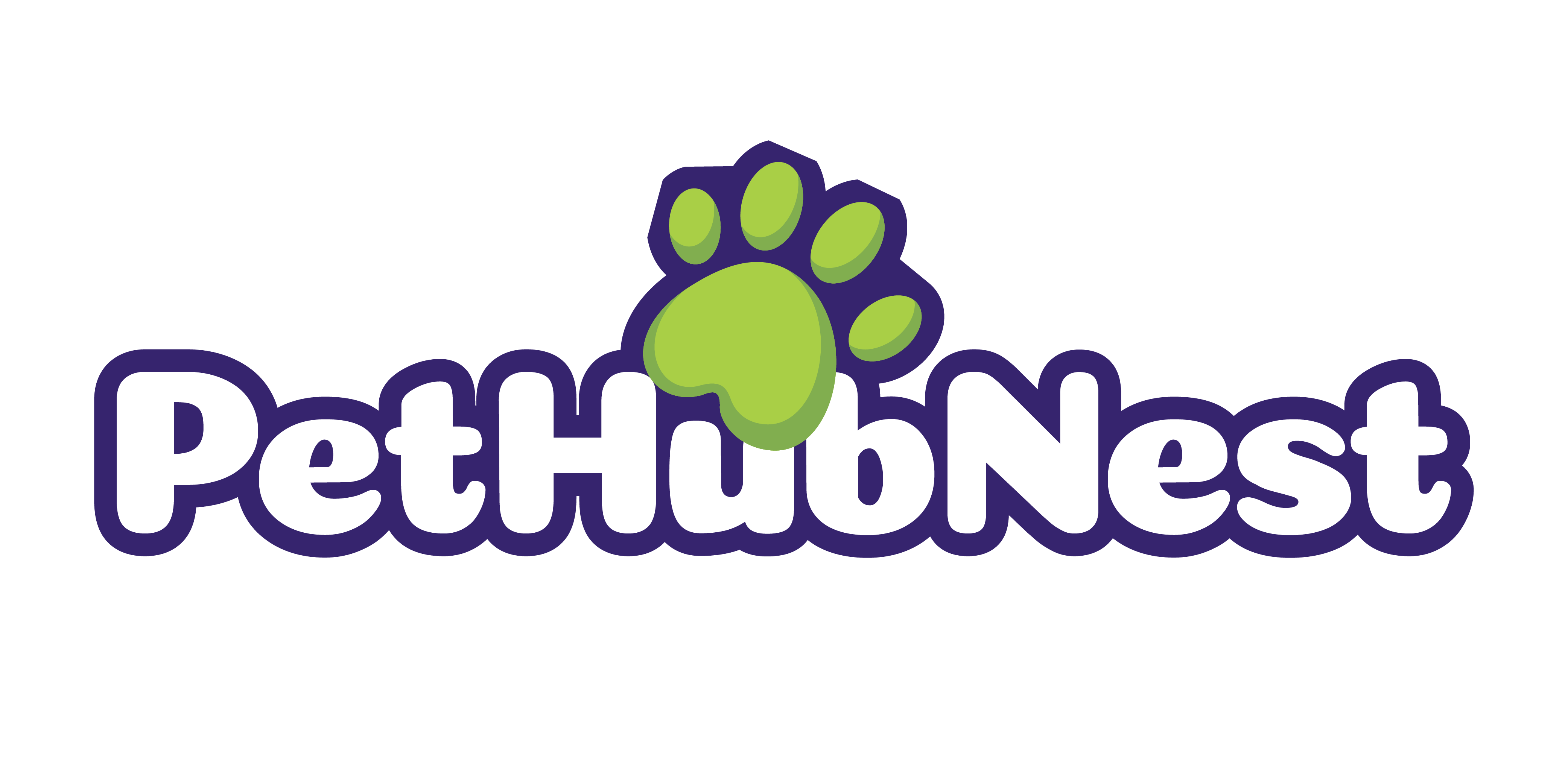
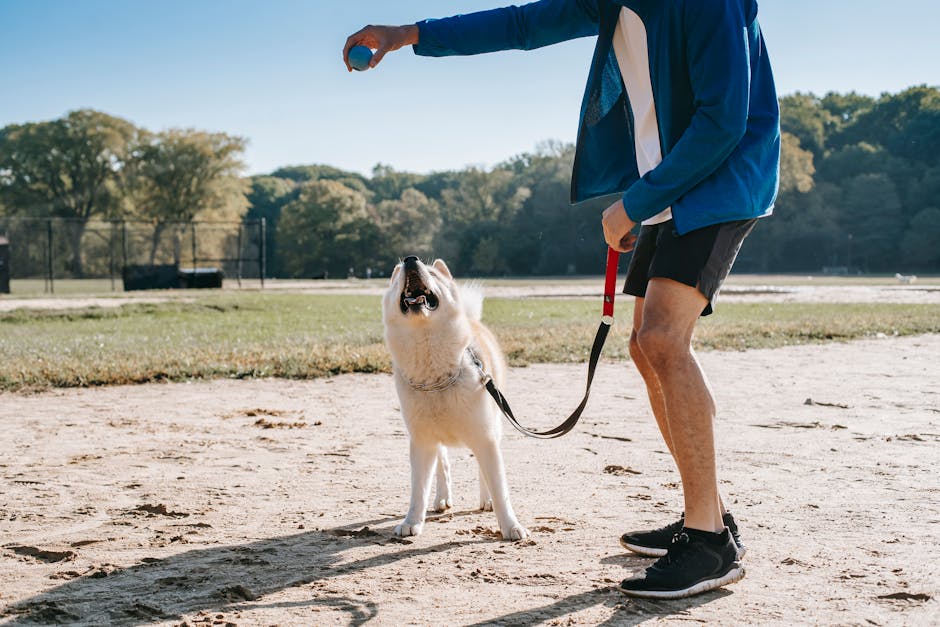
 Annelina Pierceric is a dedicated author at pethubnest She shares practical insights on pet care, exploring new ways technology can support healthier and happier lives for pets.
Annelina Pierceric is a dedicated author at pethubnest She shares practical insights on pet care, exploring new ways technology can support healthier and happier lives for pets.